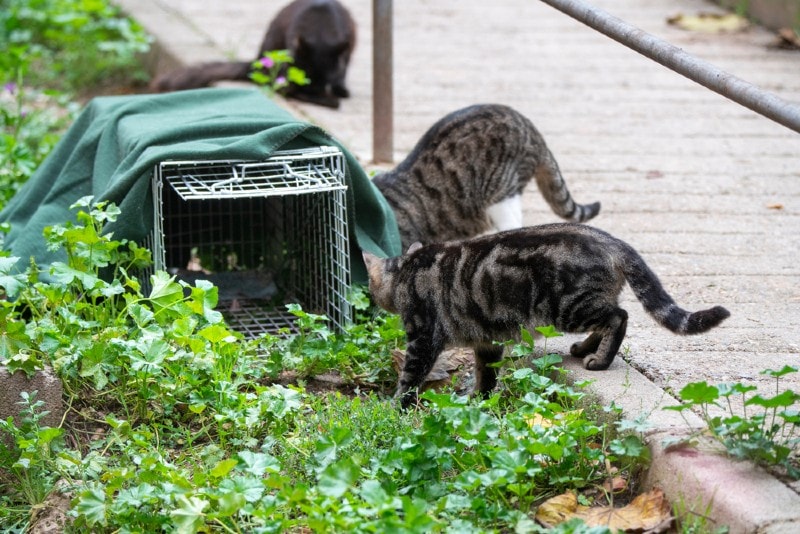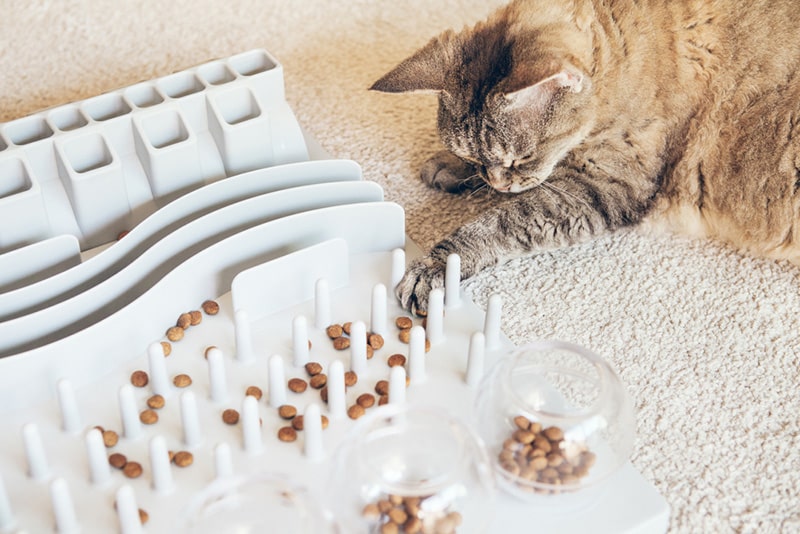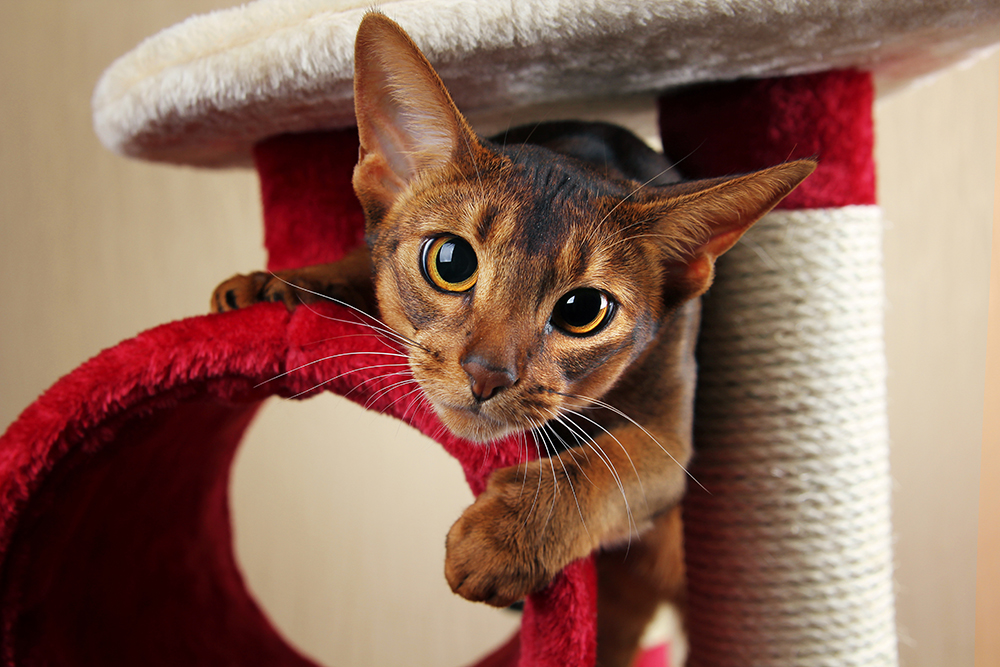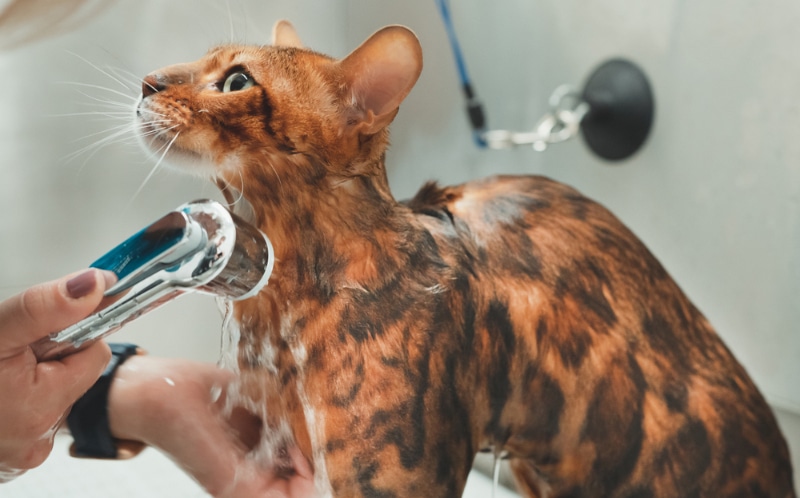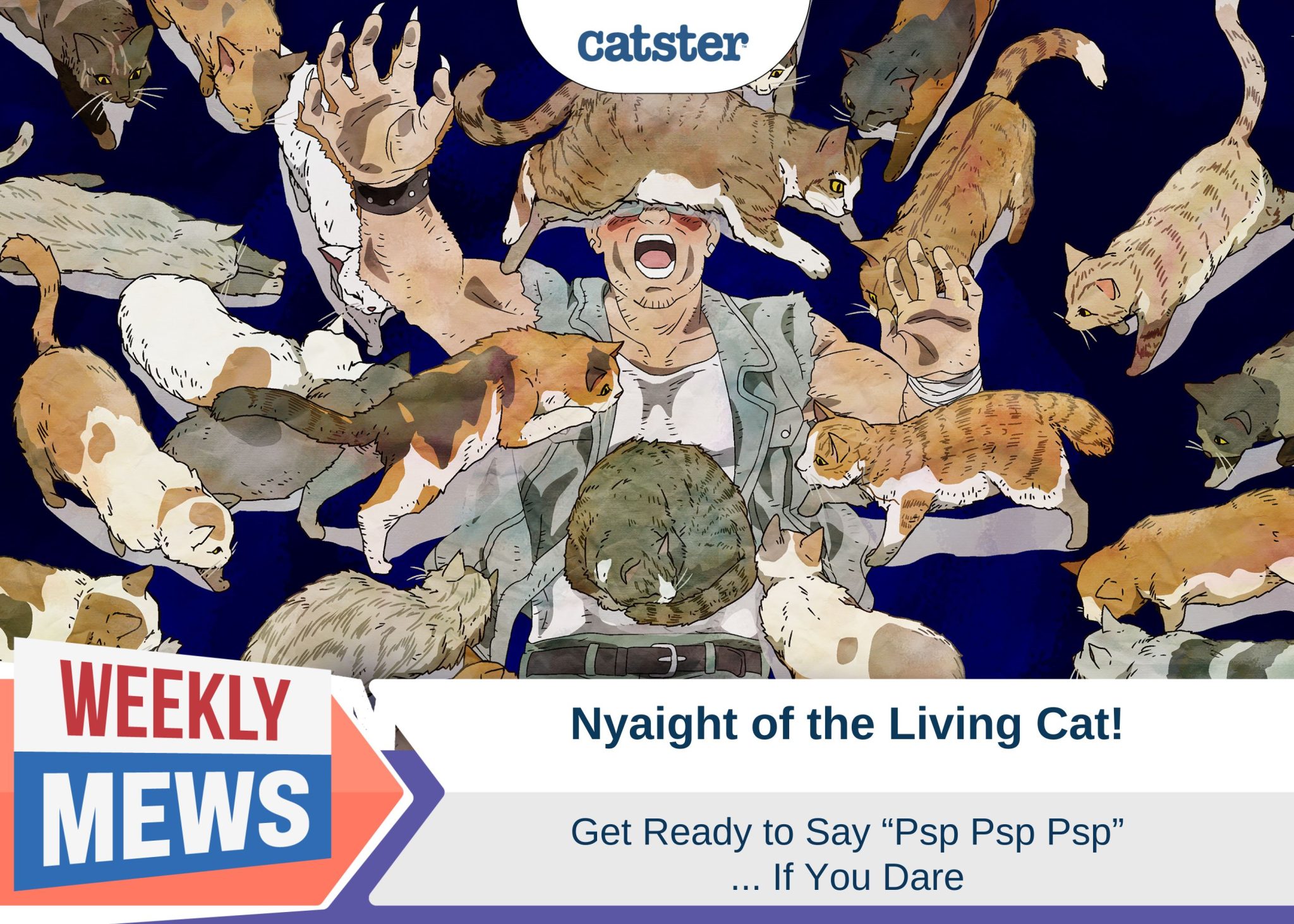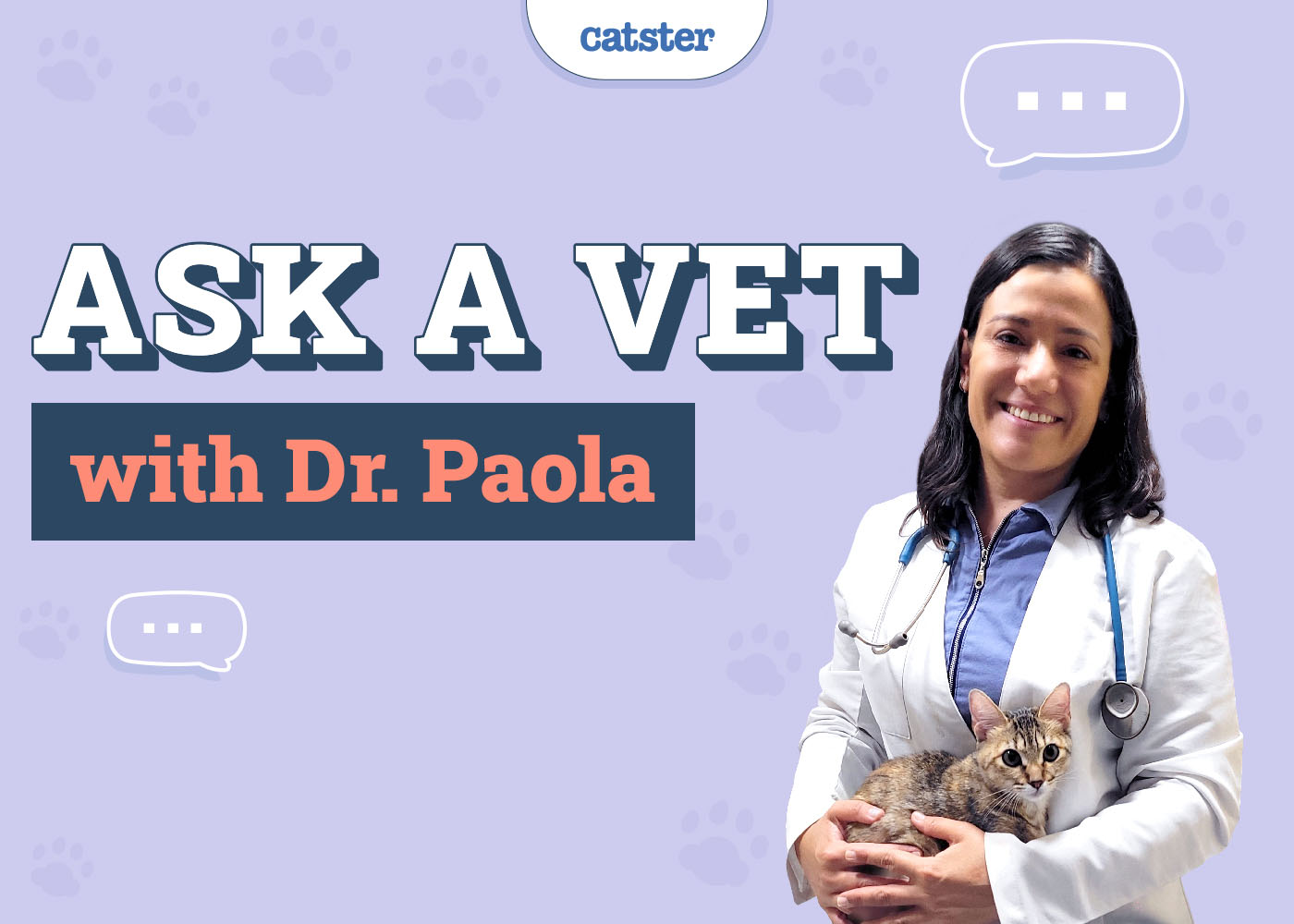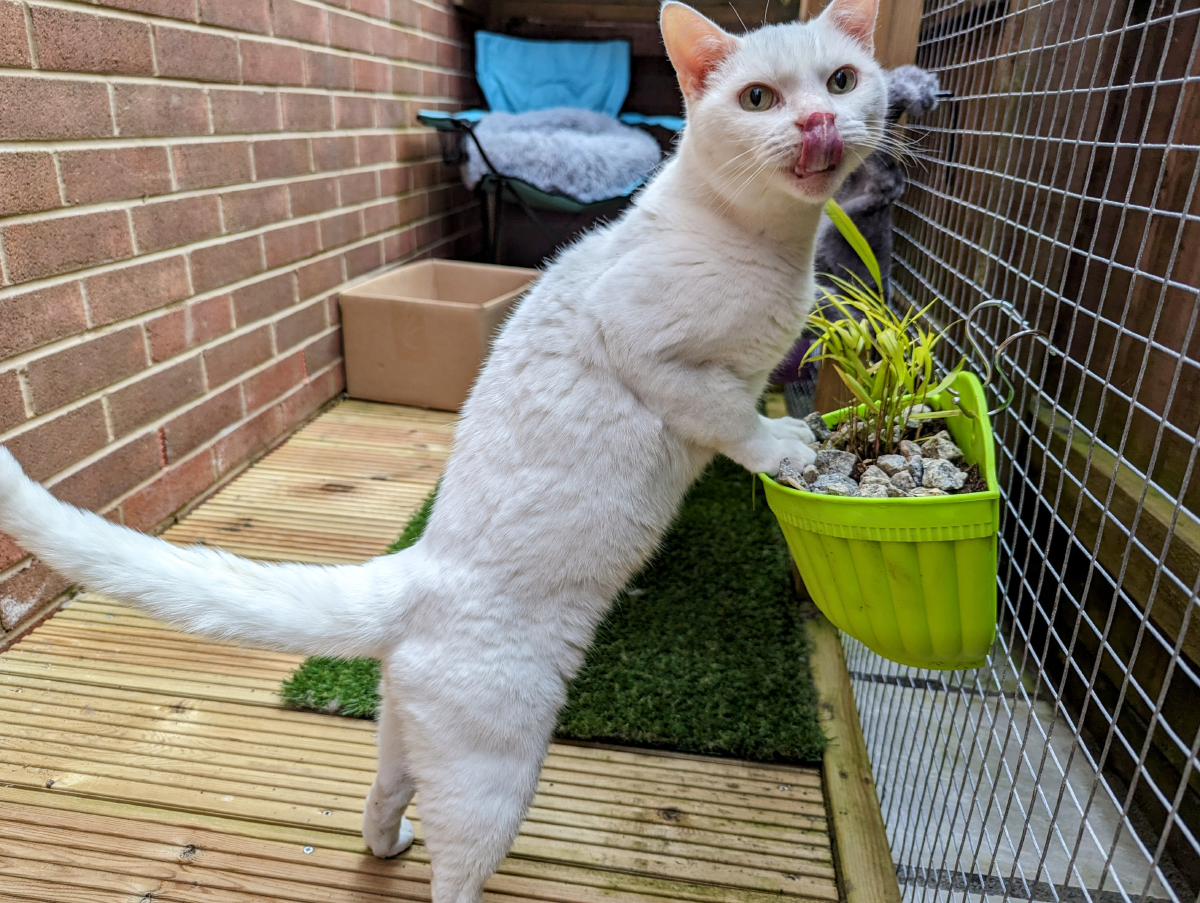Click to Skip Ahead
If you spend any amount of time in the cat community you will likely come across people who are in favor of TNR (trap, neuter, and return/release). This is a practice in which feral cats are humanely captured, neutered, and then returned to the environment. This is done in order to help reduce the feral cat population. If you think this sounds like a good idea, you are not alone. There are many proponents of this program. However, there is also a lot you need to know before trying to participate yourself.
Here is everything you need to know about trapping, neutering, and returning feral cats.

Preparation
Before you start trapping cats in your neighborhood, there are some things you need to get and some things you need to be aware of. Before doing anything of this nature you should ideally consult a local expert on the practice and look up the laws and regulations governing nuisance animals. You don’t want to accidentally break the law and end up with a fine and an inconvenient court date.
- Expert advice
- Knowledge of local laws
- A humane trap
- Cat food
- A vet or shelter you can bring the cat to
- Time: 1–7 days

The 9 Steps to Trap, Neuter, & Return Feral Cats
1. Call a Professional
If you are interested in trapping, neutering, and releasing feral cats in your area to help reduce the feral cat population, you should first attempt to contact a professional. Some areas have dedicated teams of trained professionals and veterinarians who volunteer to trap, neuter, and release cats. If you look up trap, neuter, release programs in your area, you might be surprised to find some great resources to consult. You should do this before trying to help on your own.
Some local shelters run their own trap, neuter, and release programs for the local area, and you can request that they come to your neighborhood. This way, you don’t have to deal with the legal repercussions, risk injury, or risk harming the local cats by trying this on your own. You should consider consulting a professional before trapping feral cats on your own, especially if you do not have formal training or prior experience.
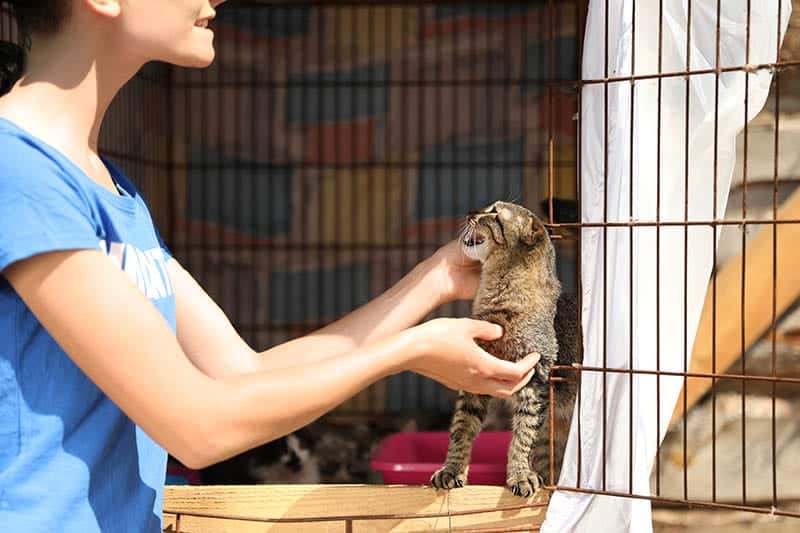
2. Get a Suitable Trap
If you want to trap feral cats, you will need to get a trap that is both humane and effective. You can buy basic animal traps that are suitable for the job at big box stores. You can also buy animal traps online. You want to get humane traps that work by closing a door behind the animal. Make sure you are getting a trap that is big enough for a cat and has no chance of accidentally harming them. These traps work by loading bait and then triggering a pressure plate when the animal enters, which closes the door behind them, trapping them inside.
3. Find a Suitable Location
There are two important factors to consider when choosing a location to place a cat trap. First, it needs to be a location where you are allowed to set traps. You don’t want to get in trouble by placing a trap in an unauthorized area. (Check with your local fish and wildlife agency for more details.) Ideally, the trap will not be visible to the public for a number of reasons. Trap and release is controversial, and some people will not be happy to find you trying to trap feral cats. Also, if you leave your trap out in the open, some unscrupulous people might simply take it for themselves.
The other thing you want to consider is whether there are appreciable numbers of cats in the area. If you are trying to trap just one specific cat, your chances of success will be very low. You want to place the trap in an area where there is a cat colony or numerous feral cats to increase your chances of success.
You will also want to put the trap somewhere that you can easily access it. You don’t want to put it somewhere where you have to walk into the woods or down a trail to get to. That is because you are going to need to check the trap frequently (more on that below), so having easy access is important.
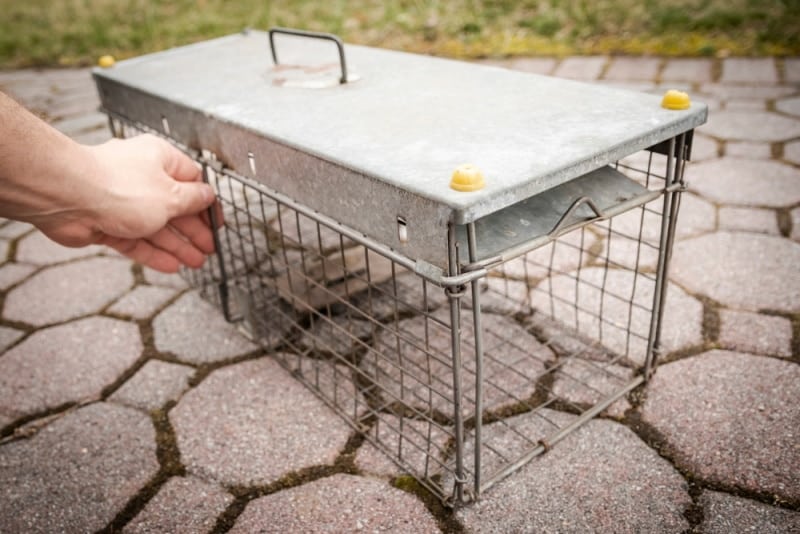
4. Check Local Rules and Regulations
Before you run out and start trying to trap feral cats on your own, you need to look at your local rules and regulations. Every community has rules governing who can trap animals, who can hunt animals, whether you need a permit, if there are certain seasons for these activities, and where you can pick up and release nuisance animals.
Not adhering to your local laws can lead to fines and tickets if you are not careful. These regulations are enforced by your local animal control, city ordinance, or fish and wildlife commission. Some areas have programs that support trap and release and will have pertinent information. Other areas do not support trap and release, and specific rules might pose an obstacle to your efforts. You do not want to make a mistake and run against the law by accident.
5. Load and Set the Trap
Once you are sure that you are allowed to place traps for feral cats and you have chosen a suitable location, it is time to load the trap. Be sure to follow the instructions for your particular animal trap so that you load it correctly. You don’t want the trap to malfunction and injure the cat you are trying to capture.
Set the trap, make sure that the doors are working, and place your bait inside the trap. You should use cat food as bait for the best chance of luring cats. Wet food is more aromatic than dry food, but either can work. You want to place a small can of bait on the pressure plate inside the trap and then leave it. Also, be aware that placing dry or wet food can attract bugs or unwanted critters to your trap.
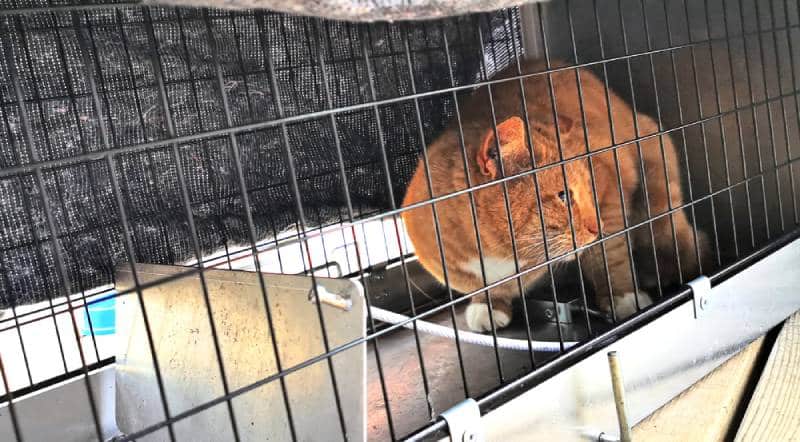
6. Wait
Once the trap is set and loaded, you just need to wait. Sometimes, it can take days before you get any signs of activity around your trap. If you continue to find that your trap is empty, you should consider moving it to a new location. Trapping animals is not always as easy or straightforward as some people make it out to be.
7. Check the Trap
If you place a trap, you want to check it multiple times daily, but at minimum once every 12 hours (once in the morning and once in the evening providing environmental conditions allow). You do not want a cat sitting in a trap for more than a few hours. If you leave a cat in a trap for days on end and someone finds the trap, you can open yourself up to animal cruelty charges. If the trap is empty, come back and check again. Also, be sure to check the bait to make sure another animal didn’t manage to go in, take the bait, and leave without becoming trapped.
You should also prepare yourself because you might accidentally trap other animals that you did not intend to catch. This can include animals like raccoons or opossums, so you need to have a release plan for those animals as well. (Releasing animals like raccoons can have different rules than releasing animals like feral cats. In some cases, you will not be allowed to release the raccoon where you captured it, so keep that in mind.)
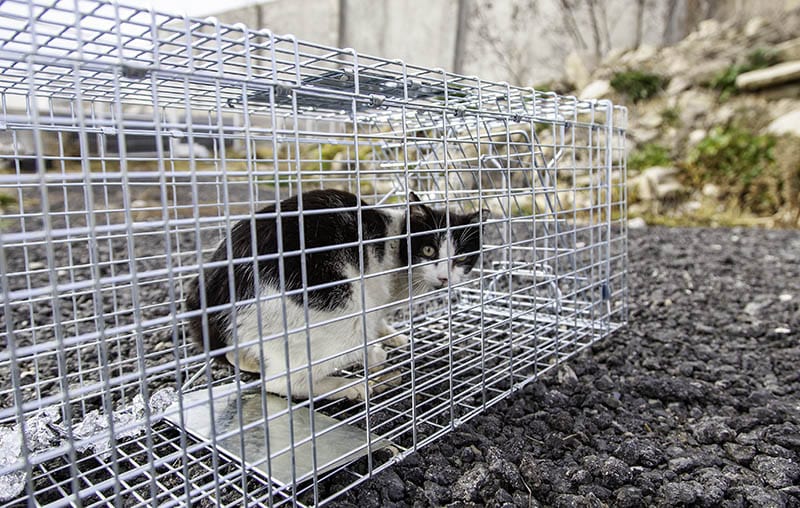
8. Bring the Cat to the Vet (or Local Shelter)
Once you have captured a cat, it is time to bring them to a local veterinarian to get neutered. Be sure to keep the feral cat inside the trap when you are transporting them. Trying to let the cat out or trying to handle the cat can lead to bite and scratch wounds, which can be nasty if a vet has never treated the cat in the past. Place some fresh food and water in the trap for the cat if you are able, but never handle a feral cat without training or supervision.
Before you do this, you should call around to find a vet willing to examine and/or neuter the cat. Some areas have veterinarians who will neuter feral cats for cheap or even free through various programs. Sometimes, the local shelter will also take the cats and let their vets neuter them. You should not show up at a random vet clinic and ask them to spay your feral cat. They need to know you are coming, and they need to be willing to neuter feral cats. Regular prices for neuters can run hundreds of dollars, and if you don’t do your research or build a relationship with a local vet or program, you could be on the hook for those costs.
- Call ahead
- Ask about neutering feral cats
- Inquire at the shelter about the best way to get a feral cat neutered
- Show up unannounced
- Demand services for cheap or for free
- Expect every vet to accommodate your request for neuters for feral cats
9. Release the Cat (or Surrender the Cat)
Finally, once the cat is neutered, it is time to release it. Some vets or shelters will let you surrender the cat to them so that they can release them (or try and adopt them). Surrendering the cat whenever possible is the easiest course of action for you because it releases you of any liability or responsibility for the cat. It also lets you off the hook for accidentally releasing them improperly and getting a ticket from the city. (Some neighbors will not appreciate you releasing feral cats near their homes.) If you can’t surrender the cat, look up your local rules about releasing nuisance animals and follow their guidelines. Many areas have nature preserves or wilderness areas where releasing feral animals is allowed.
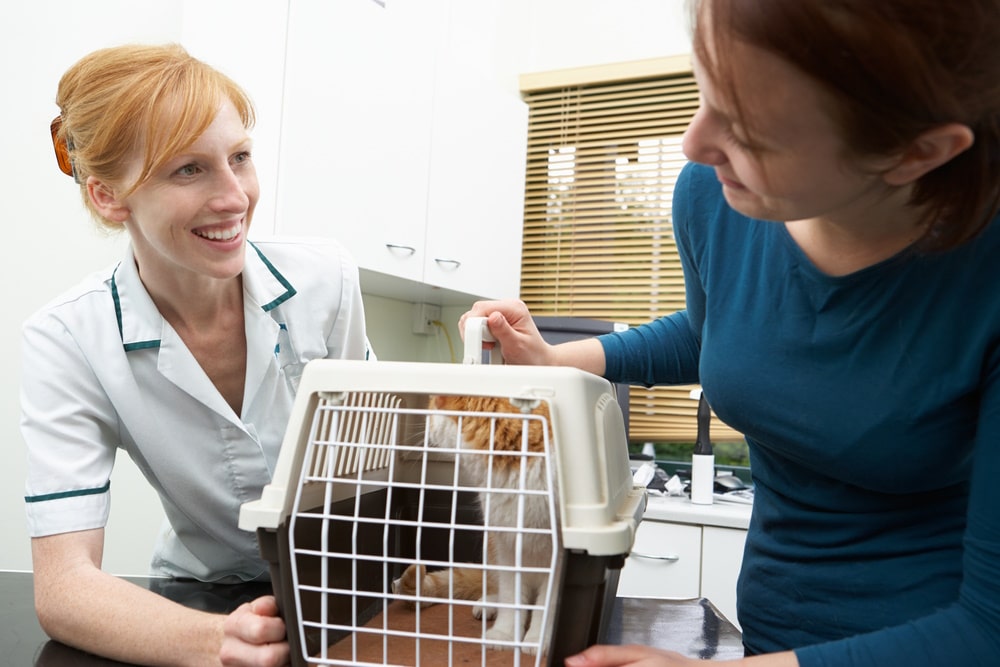

Why Is Trap, Neuter, Release (TNR) Controversial?
TNR can be controversial. There are large numbers of people that do not agree with the practice. These people range from veterinarians to public health officials to cat lovers. Some people disagree with the idea that animals should be trapped and forcibly sterilized, even if it could potentially save them from euthanasia down the road. People don’t like seeing cats be put into traps. They don’t like potentially having feral cats released near their home. If someone sees you trapping a cat and taking it away, they might say something, confront you, or call the police or animal control. So be prepared for that.
What Are the Benefits of TNR?
The benefit of TNR is the humane treatment of animals. People worry that if feral cat populations grow too large, then the local government will round them up and euthanize them to keep the population down. By trapping, neutering, and releasing cats you will reduce the number of cats that are able to reproduce which will, in turn, lower the cat population without having to euthanize or deport large numbers of cats. However, the tangible results of TNR programs are not fully agreed upon. Some people see great benefits in the practice, while others think that it is a lot of effort and risk for very little payoff.

Conclusion
These steps, tips, and guidelines will help you safely navigate trapping, neutering, and releasing cats. This program is not without controversy, and there are a number of pitfalls and legal quibbles to work out before you try. Ideally, you get plugged in with a local group that does this regularly so you can get some expert advice on the job. It is not advised to simply start trapping feral cats without any sort of oversight due to the inherent risks associated with the practice. Animal shelter employees, veterinary technicians, and veterinarians all receive extensive training before doing these types of activities, which should tell you a lot about the potential risks.
Featured Image Credit: Bykofoto, Shutterstock

